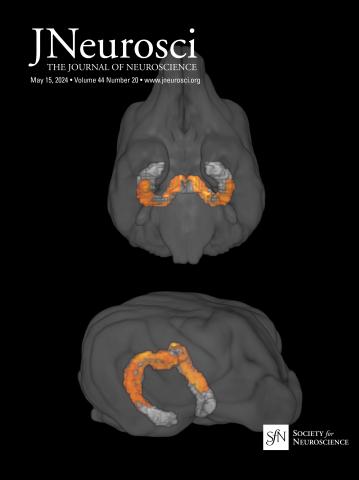Multi-omics analysis reveals miR-7220-5p alleviates N2O addictive behaviors via NR2B/ERK/CREB signaling.
IF 4
2区 医学
Q1 NEUROSCIENCES
引用次数: 0
Abstract
Nitrous oxide use Disorder(NUD)has recently received increasing social concern for its sharp rise among young people. However, the underlying mechanisms of NUD remain largely unexplored, which obstructs treatment strategy development and may exacerbate the epidemic of N2O abuse. Thus, specifying the essential mechanisms and targets in NUD are desperately needed. Here we unveiled a series of molecular adaptations regarding N2O reward memory in Nucleus accumbens (NAc) of mice through multi-omics approaches comprising transcriptomics, proteomics, metabolomics approaches. Our miRNA transcriptomics and pull-down proteomics analyzes uncovered that miR-7220-5p regulated N2O-induced conditioned-place preference (CPP) and associated increase of dendritic spine density in NAc of male mice. Our pull-down proteomics and metabolomics analyzes revealed that miR-7220-5p modulated ERK signaling pathway by directly binding with NR2B receptor. In summary, our work confirmed that restoring miR-7220-5p expression in NAc protected against synaptic abnormality via the NR2B/ERK/CREB signaling, thereby attenuating CPP behaviors in NUD. Selective inhibition of NR2B or ERK signaling blocked the reward memory of N2O-CPP via NAc microinjection. Our study proposed a potential therapeutic strategy for NUD and provided comprehensive resources of biological data to support future investigations of NUD treatment.Significance Statement Nitrous oxide Use Disorder (NUD) has recently received tremendously increasing social concern for its sharp rise among young people. Although the neurological consequences and their etiologies of consuming N2O have been well elucidated, the underlying mechanisms of NUD remain largely unexplored, which obstructs the development of clinical treatment strategies and may exacerbate the epidemic of N2O abuse. Our work uncovered the role of miR-7220-5p/NR2B/ERK/CREB signaling against synaptic abnormality/CPP behaviors. Selective inhibition of NR2B or ERK signaling blocked the reward memory of N2O-CPP via NAc microinjection. Our study proposed therapeutic targets for overcoming NUD behaviors and the omics data provided comprehensive biological resources to support future investigations of NUD.多组学分析显示,miR-7220-5p通过NR2B/ERK/CREB信号通路缓解N2O成瘾行为。
一氧化二氮使用障碍(NUD)近年来因其在年轻人中的急剧上升而受到越来越多的社会关注。然而,NUD的潜在机制在很大程度上仍未被探索,这阻碍了治疗策略的发展,并可能加剧N2O滥用的流行。因此,迫切需要明确NUD的基本机制和靶点。本研究通过转录组学、蛋白质组学、代谢组学等多组学方法揭示了小鼠伏隔核(NAc)中N2O奖励记忆的一系列分子适应。我们的miRNA转录组学和下拉蛋白质组学分析发现,miR-7220-5p调节n20诱导的条件位置偏好(CPP)和雄性小鼠NAc中树突棘密度的相关增加。我们的下拉蛋白质组学和代谢组学分析显示,miR-7220-5p通过直接与NR2B受体结合来调节ERK信号通路。总之,我们的工作证实,恢复NAc中miR-7220-5p的表达可以通过NR2B/ERK/CREB信号传导防止突触异常,从而减弱NUD中的CPP行为。通过NAc微注射选择性抑制NR2B或ERK信号通路阻断n20 - cpp的奖励记忆。我们的研究提出了NUD的潜在治疗策略,并提供了全面的生物学数据资源,以支持未来NUD治疗的研究。一氧化二氮使用障碍(NUD)近年来因其在年轻人中的急剧上升而受到了极大的社会关注。虽然摄入N2O的神经后果及其病因已经很好地阐明,但NUD的潜在机制仍未得到充分探讨,这阻碍了临床治疗策略的发展,并可能加剧N2O滥用的流行。我们的工作揭示了miR-7220-5p/NR2B/ERK/CREB信号在突触异常/CPP行为中的作用。通过NAc微注射选择性抑制NR2B或ERK信号通路阻断n20 - cpp的奖励记忆。我们的研究提出了克服NUD行为的治疗靶点,组学数据为未来NUD的研究提供了全面的生物学资源。
本文章由计算机程序翻译,如有差异,请以英文原文为准。
求助全文
约1分钟内获得全文
求助全文
来源期刊

Journal of Neuroscience
医学-神经科学
CiteScore
9.30
自引率
3.80%
发文量
1164
审稿时长
12 months
期刊介绍:
JNeurosci (ISSN 0270-6474) is an official journal of the Society for Neuroscience. It is published weekly by the Society, fifty weeks a year, one volume a year. JNeurosci publishes papers on a broad range of topics of general interest to those working on the nervous system. Authors now have an Open Choice option for their published articles
 求助内容:
求助内容: 应助结果提醒方式:
应助结果提醒方式:


